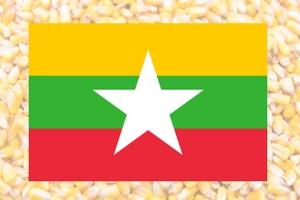Buyers in Myanmar can once again import U.S. corn, thanks to quick and diligent work by the U.S. Grains Council (USGC) to meet new phytosanitary requirements related to pest risks.
The Myanmar government imposed new pest risk analysis requirements for imported plant-related commodities, including U.S. corn, on Jan. 1, 2017. Under the new directive, the Myanmar Plant Protection Division (PPD) prohibited the import of plant and plant-related products unless the exporting country provided this new information, which includes how the country deals with pest outbreaks and is intended to ensure commodity safety.
Myanmar officials granted the United States an extension for complying with these requirements, which expired on Aug. 31, 2017. In that time, several U.S. commodity groups, including the Council, worked with the U.S. Department of Agriculture’s (USDA’s) Animal and Plant Health Inspection Service (APHIS) and industry partners to put together the documentation needed to ensure that U.S. corn and U.S. DDGS met the technical requirements of the new regulations.
This documentation was accepted and, as a result, Myanmar is once again open to U.S. corn imports, as of Dec. 1, 2017.
“The feed industry views Myanmar as a young Vietnam,” said Manuel Sanchez, USGC regional director for Southeast Asia. “Although smaller than Vietnam, the fundamentals for growth exist and we need to keep the doors open for U.S. corn and DDGS.”
Myanmar is currently a net corn exporting country, sending grain primarily to to China. However, domestic feed consumption is growing along with the country’s poultry and swine industries. Myanmar has also started importing U.S. DDGS, and the Council is optimistic these sales represent the beginning of a new and robust market for U.S. farmers.
“Being present in the market and aware of technical deadlines are essential,” Sanchez said. “Addressing these potential barriers proactively ensures that U.S. exporters can participate in future growth opportunities in Myanmar.”
Learn more about the Council’s work on sanitary and phytosanitary issues here.


